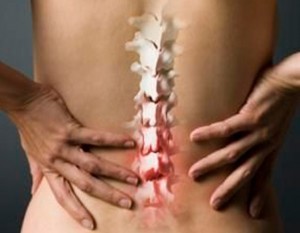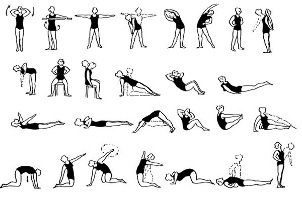Currently, a large number of people suffer from osteochondrosis. Many of them do not even know about the existing problem. If you don't start treatment on time, complications will arise that will last for the rest of your life. Osteochondrosis, like many other diseases, becomes "younger" and significantly worsens the quality of life, causing it to lose its normal rhythm.
In our article, we will learn a little about the disease itself and delve into the medical method of treatment in detail.
Osteochondrosis and its types
Osteochondrosis is a deformation of the articular cartilage, the bone tissue of the spine and the intervertebral discs.
Osteochondrosis occurs:

- lumbar (lumbosacral),
- cervical,
- chest.
Causes of osteochondrosis:
- walking upright,
- curvature of the spine,
- spine injury,
- Flat feet,
- frequent heavy lifting,
- frequent changes of the trunk position,
- longer stay in uncomfortable positions,
- Spinal column overload,
- physical inactivity and obesity,
- Malnutrition,
- stressful conditions.
Stages of osteochondrosis development
- Due to certain changes in the intervertebral disc, instability of the vertebrae occurs. The spine is very prone to injury.
- The beginning of the destruction of the fibrous ring of the intervertebral disc occurs. The intervertebral gap decreases.
- The annulus fibrosus tears. The nucleus pulposus of the intervertebral disc protrudes. The formation of an intervertebral hernia leads to a deformity of the spine.
- A pronounced pain syndrome occurs. Due to the formation of bone growth and the ossification of the ligaments of the spine, movements are restricted.
Symptoms of osteochondrosis
Lumbar (lumbosacral) region
- Constant aching back pain.
- Sensation of pain and numbness in the limbs.
- Decreased physical activity.
- Increased pain when moving suddenly, lifting weights, exercising, sneezing, and coughing.
Neck region
- Pain in arms and shoulders, headache.
- Vertebral artery syndrome (burning, throbbing headache, dizziness, head noises, colored spots and "flies" in front of the eyes).
chest
- Pain in internal organs, especially in the chest ("pile" in the chest) and in the heart area.
Determination of the diagnosis
The diagnosis is made at the appointment of a neurologist based on the patient's complaints (pain syndrome, restricted mobility, etc. ). The spine is examined by him in the position of the patient, who is standing, sitting and lying (at rest and in motion). When examining the back, the posture, structural features of the trunk, the lower angles of the shoulder blades, the lateral contours of the neck and waist, the position of the shoulder girdles, etc. are taken into account. After that, the doctor usually instructs the patient to have X-rays, computed tomography or MRI, with the help of which the diagnosis is clarified and concretized, the degree of damage is determined and hidden deviations from the norm are revealed. Based on the data obtained, the neurologist will prescribe the appropriate treatment. This is usually a complex therapy that includes the use of medication, massage, exercise therapy, and other methods.
Therapeutic exercises for osteochondrosis of the lumbar spine

Treatment of osteochondrosis with drugs
First of all, it should be noted that in the initial stages of the development of osteochondrosis, in certain cases, you can do without medication. It will be enough to use therapeutic gymnastics, all types of applicators, as well as reduce loads and eliminate other causes of the disease. When symptoms gain strength and studies have shown characteristic changes, drugs that affect both the cause and symptoms of osteochondrosis should be used.
Treatment of osteochondrosis with drugs is indicated during the period of its exacerbation and is aimed at relieving the inflammatory process, relieving pain and improving metabolic processes due to internal ingestion or administration of drugs by injections.
Due to the fact that osteochondrosis is a systemic disease that negatively affects various organs and systems, its treatment should be comprehensive. Medicines for the treatment of osteochondrosis perform the following tasks:
- Pain relief,
- Removal of inflammation,
- Improvement of the blood flow in the affected tissues,
- Cartilage restoration,
- Restoring the mobility of the joints,
- Eliminate depression through constant pain.
What medications can a neurologist prescribe to treat osteochondrosis?
- NSAIDs (nonsteroidal anti-inflammatory drugs).
Eliminate inflammation and pain. They are used externally (gel, cream), internally (capsules, tablets) and in the form of injections (intramuscular, intravenous, subcutaneous).
- vasodilators (vasodilators).
As a result of muscle tension and pain in osteochondrosis, blood vessels constrict. Against this background, to avoid undesirable consequences, the doctor may prescribe vasodilators for a better restorative effect.
- muscle relaxants (muscle relaxants).
Muscle relaxants have a relaxing and calming effect on the muscles. The healing process without drugs of this group is slower, because due to their properties, blood circulation normalizes, pain sensations become dull, mobility returns, and affected tissues recover faster.
- Chondroprotectors.
Chondroprotectors do not destroy any further, they stabilize the condition. The use of chondroprotectors is long-term and lifelong. The effect occurs after treatment for at least 6 months. Chondroprotectors are used externally, internally and in the form of injections.
- Glucosamine
- Chondroitin
- Glucosamine + Chondroitin
- Glucosamine + Chondroitin + Vitamins
- Sedatives (tranquilizers).
Long-term pain syndrome can trigger stress and depression. In this case, valerian, feverfew and combined herbal preparations are prescribed. For more serious illnesses, antidepressants and hypnotics are used to improve the process of falling asleep and the quality of sleep.
- Vitamins and vitamin-mineral complexes.
B vitamins are of great importance here because they restore the sensitivity of the affected nerve fibers and can relieve pain.
Vitamin and mineral complexes can also be prescribed for general strengthening of the body.



























